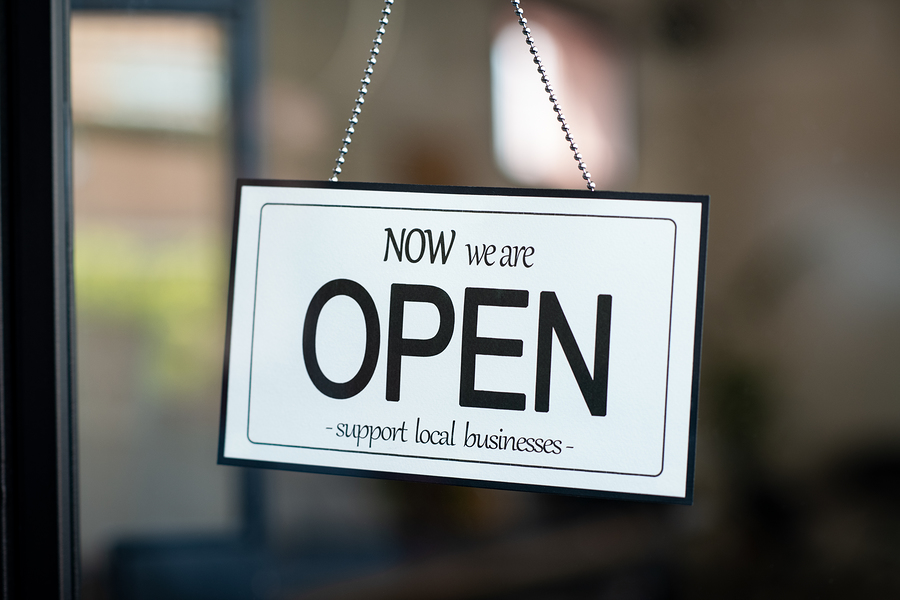After months living in something approximating total lockdown, cities around the country are steadily reopening. Restaurants are inviting patrons back in, libraries are resuming services, and schools are planning what the fall semester will look like. As these operations reopen, though, they’ve had to embrace design changes to minimize the spread of disease – and if you’re a business owner on the verge of reopening, you’re likely feeling overwhelmed by all of the options.
What’s the best way to slow the spread of COVID as staff and clients return to your business? Questions remain. What we do know so far is that, along with sanitization and mask use, these 3 design modifications can make a big difference in community health.
Basic Barriers
Early in the pandemic, one of the first changes we saw in critical public spaces, like grocery stores and pharmacies, was the installation of glass screens at checkout stations and other points of interaction. By placing a physical barrier between staff and customers, these businesses hoped to keep their employees and their patrons safe. Physical barriers are the closest we can get to “no contact” in situations where transactions still need to take place, and we’re sure to see a lot of them popping up to keep people apart.
Lines Of Motion
The fact that businesses are in the process of reopening right now has less to do with the fact that the pandemic is over and more to do with helping the economy recover. That’s understandable, but ongoing community spread means that businesses need to do as much as possible to protect their customers and employees – even when it’s inconvenient. In restaurants, for example, that may actually mean having more people in the kitchen rather than less because everyone needs their own complete station.
In addition to centralizing prep stations, restaurants and other businesses are also creating single lines of motion, with all traffic moving in a single direction so that people don’t bump into each other. We saw this earlier in the pandemic in grocery stores, and we’re sure to see similar markings pop up in other businesses as they reopen, as a way of guiding patrons through the space.
Visual Cues
Generally speaking, we’re bad at judging distance. It’s not a skill we’re asked to use under normal circumstances and, researchers examining our social distancing practices now have determined that, not only do we misjudge distances, our accuracy varies depending on who we’re standing near. For example, we are more likely to think we’re standing six feet from our friends when we’re much closer than that, than if we’re asked to stand six feet from a stranger. As such, we can expect our physical environments to include spacing cues to help people estimate where to sit or stand – but don’t expect them to all be taping off spaces on the floor.
Because spacing will become an integral part of how we navigate public spaces, businesses are more likely to use design aspects like carpeting, colored tiles, or table spacing to show people where to sit and stand. Such design-based cues are more attractive than putting tape everywhere, and especially in high-end businesses, you can’t underestimate the importance of style.
As the reopening process moves forward, we’ll steadily gain a better understanding of which space management strategies work and which are ineffective. Meanwhile, the most important thing that everyone can do is to proceed with caution and patience. This is all new and uncertainty, but we are figuring it out as communities.

Leave a Reply